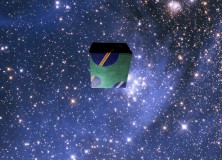In the past few years I have settled into a conception of memes (that is, of the cultural analog to the biological gene) as properties of physical objects, events, and processes. If, for example, we’re talking of the spoked wheel, then certain of its discernible physical properties (such as its shape) have memetic function, but not the wheel itself. The wheel itself is simply a physical object, like a stone or a mountain. Similarly, the process of making a spoked wheel has memetic properties, and it is those properties to which apprentices attend as they learn the craft from a master wheelwright.
My immediate source of this concept is my friend, teacher, and colleague, the late David G. Hays. I don’t know where Hays himself got the idea. But I know he’d read Dawkins, so perhaps that’s where he got it.
We discussed the idea a bit in the 1990s, but only a bit. It didn’t loom large in our discussions. It was only after he’d died (in 1995) that I decided to work on the idea, though I forget just what prompted this.
Once I made that decision I started my reading in the one place Hays had written on the idea, a relatively short passage in the final chapter of The Evolution of Technology Through Four Cognitive Ranks (1993), which he’d developed while teaching an online course on the history of technology through The New School. I have reproduced that passage below.
The term “rank” is one we used over the years in talking about the ever-increasing complexity of culture. Roughly speaking, by rank 1 we mean the cultures pre-literate societies. Rank 2 emerges with the advent of literacy while Rank 3 is what first emerged in the West in the Early Modern period (aka the Renaissance). Rank 4 is where we are now. Our basic account can be found in The Evolution of Cognition (1990), though there’s a preliminary version in my dissertation, Cognitive Science and Literary Theory (1978). You can find a handful of papers, plus an overview, at Mind-Culture Coevolution: Major Transitions in the Development of Human Culture and Society. Continue reading “What’s a meme? Where I got my conception”

